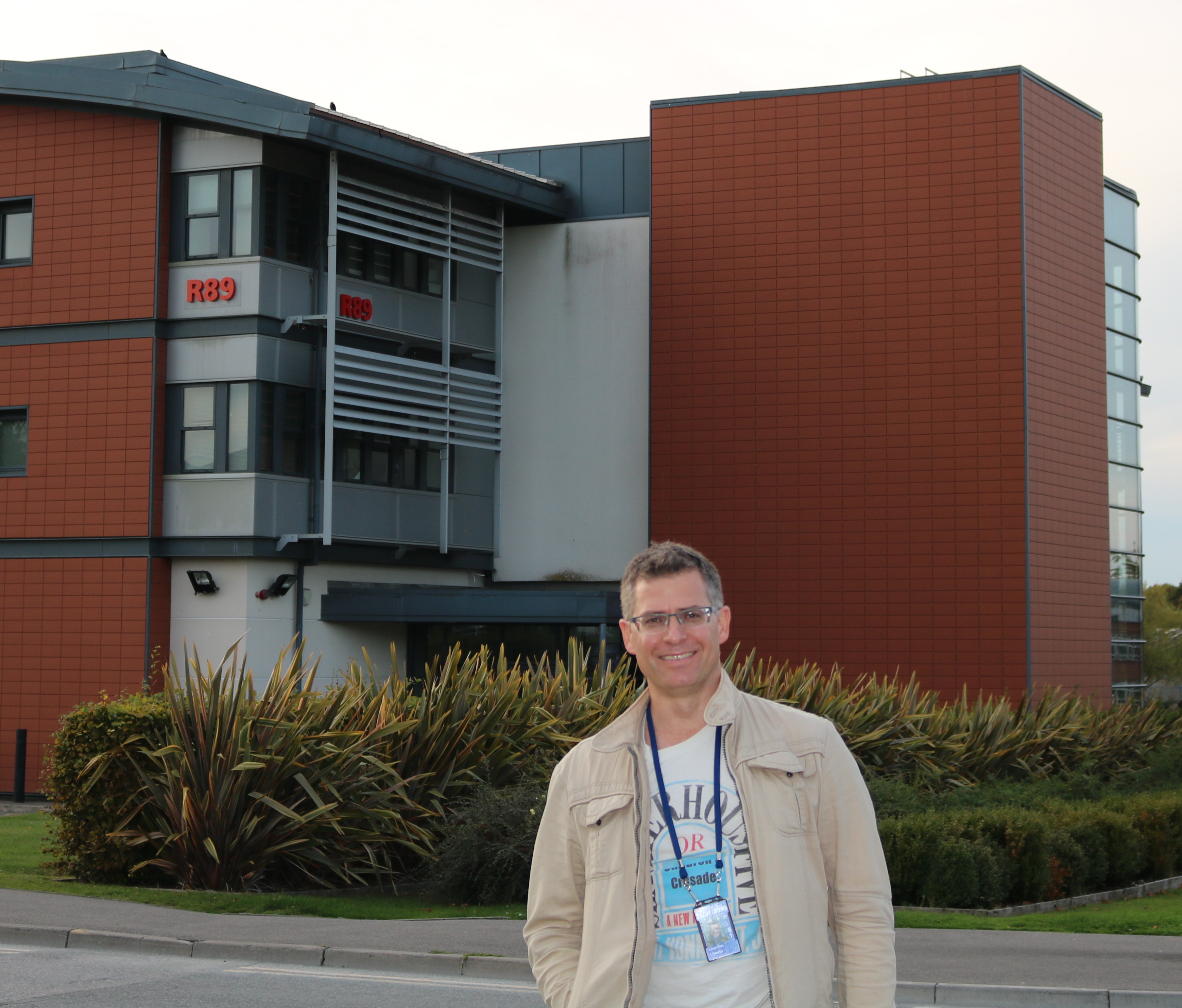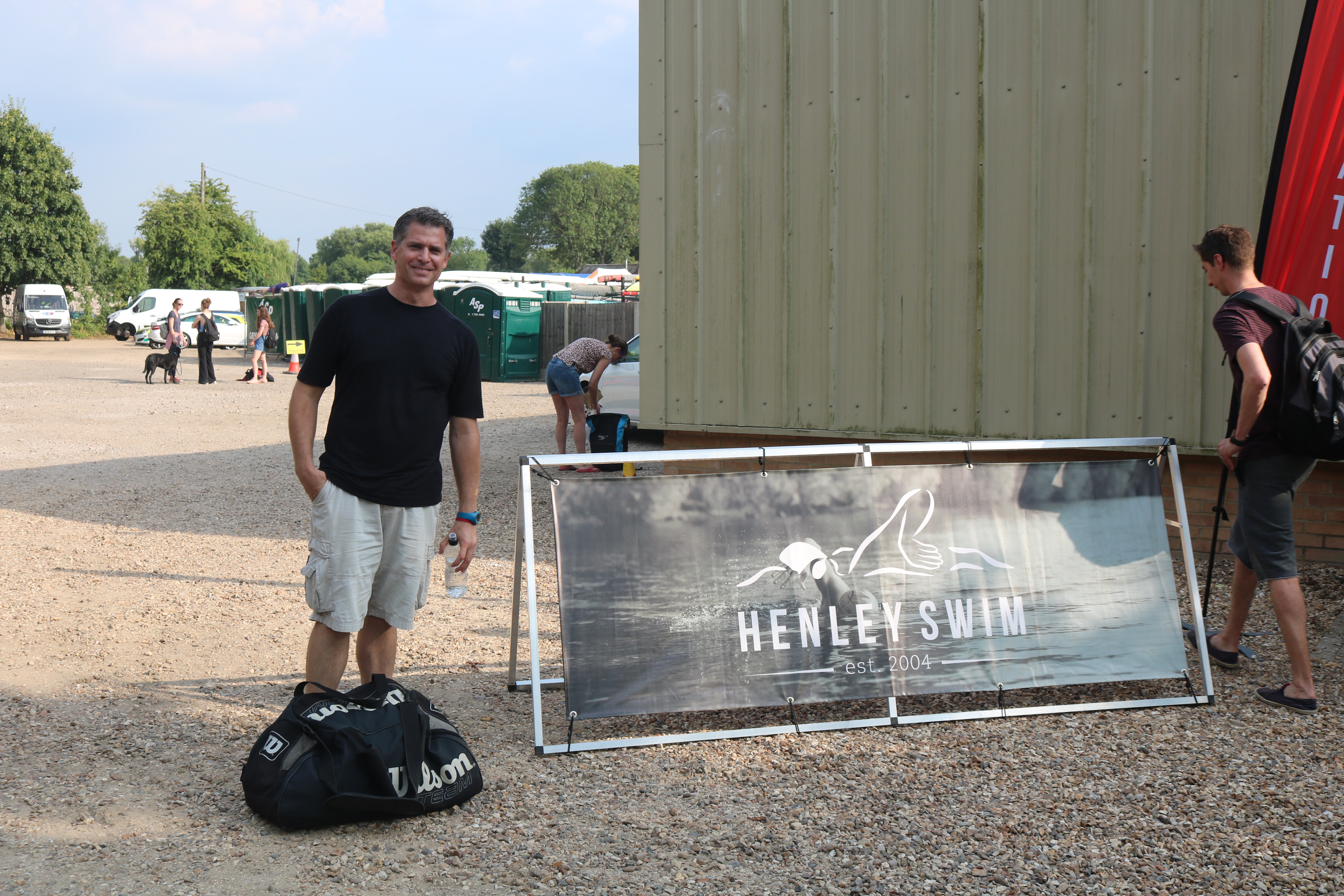“Science is a great story. You just don't have a lot of people who can tell it."

Leandro grew up in rural Argentina, an area of the world he describes as “flat and infinite". His interest in science started as a young boy – he remembers reading an article about telescopes and being fascinated. “That same summer night, I took a large mirror that we had in the living room to the back yard to see the reflection of the moon in that mirror with a pair of binoculars." At school, he studied physics and maths alongside practical skills like mechanics and carpentry.
The first in his family to finish secondary school, let alone go to university, he says engineering was the closest thing to science he could grasp. He started a chemical engineering degree and initially enjoyed learning about maths, physics and chemistry. As time went on, though, he became disillusioned. While engineering was concerned with applying formulae to achieve an outcome, he was more interested in how those formulae were derived in the first place. “You think, why does this principle take you to this formula? The road to get there is physics. When you do physics you make a million approximations. If you know what you did, you can go back at any point in the road, make a different approximation and you end up with a different formula that might work."
 Although he chose to pursue theory in his academic life, he still enjoys practical DIY projects in his spare time. “I build things, I make things, and I like to understand how things work," he says. He approaches his DIY projects in a similar way to his theoretical work. “You go through an algorithmic process. You try things, you play with things – it's intuitive and informal. When you do theoretical physics it's much more formal, much more accurate, but it's the same thing."
Although he chose to pursue theory in his academic life, he still enjoys practical DIY projects in his spare time. “I build things, I make things, and I like to understand how things work," he says. He approaches his DIY projects in a similar way to his theoretical work. “You go through an algorithmic process. You try things, you play with things – it's intuitive and informal. When you do theoretical physics it's much more formal, much more accurate, but it's the same thing."
He has a deep respect for the skills needed to build and repair. “I think there is a knowledge, a skill, a culture associated with making things which is not valued. Try to hang a door and make it close properly. Then tell me how easy it is! You need to know a lot to be able to fix things."
In his job at STFC Leandro works closely with the Muons group at ISIS Neutron and Muon Source, providing computational modelling of the experiments they facilitate. Muons are very light subatomic particles generated by firing high-energy protons at a graphite target. He describes them as “esoteric", because they only exist under certain circumstances and only for a very short time. “When a beam of muons hits a sample they are implanted into it and, once inside, the muons transform into particles called positrons, which are emitted from the sample in certain specific directions. By detecting these positrons, we can estimate the properties of the material the sample is made of."
He builds mathematical models to simulate these experiments, and then helps scientists compare the data from the real experiment to his model data. This helps them interpret what the experiment is showing. In some cases, simulating the experiment before actually doing it can speed things up by narrowing down the range of conditions that need to be tried. This saves scientists time and money.
He enjoys the interdisciplinary nature of the science he is working on. “Science has got more and more specialised as time has gone on. We're reaching a point where we're realising that we need to work together more, and that happens a lot here." His work reflects this, with applications ranging from testing the superconductors used in electronics to uncovering the mechanisms of organic chemistry reactions. Muons can even be used to investigate artefacts for museums.
“We perform something called 'elemental analysis', which is essentially a technique that allows you to know what something is made of. The technique is totally non-destructive and that is why it is used for museum pieces. Knowing the composition of many of these things is crucial for historical research."
One of the things he likes best about working at STFC is the physical proximity of the different departments. Previously he built models for experiments happening in a completely different place, but here he is only a short walk from his collaborators. “I can talk to people face-to-face. It's easier, much more dynamic." And, he says, this also means he can interact with the experiments he is modelling in a much more effective way. “When you walk across campus here at Rutherford Appleton Laboratory, you walk above a beam of protons – the technology here is unbelievable. The ability to maintain that technology and improve it has a lot to do with the skills of a lot of technical people. You need to study some theory, but you need to work with the real thing as well. There is no substitute."
Outside of work, Leandro likes to read. “I read a lot, all the time. I watch some TV, but most of the time I read." He took a part-time Post-Graduate Diploma in Science Communication while doing postdoctoral research in London, and loved every minute of it. “It was amazing. I learned a lot," he says. “I understood there why a lot of young people these days are attracted to the media – it's very attractive. Science is a great story. You just don't have a lot of people who can tell it."
 He also enjoys swimming, and has done since he was young. “I learned how to swim when I was a child, in a very half-hearted way. I used to play rugby, but after an accident I had to stop, so I got into swimming instead. I used to compete, when I was a teenager." Now, as an adult, he enjoys open water swimming most of all. “Open water is an unbelievably popular thing in the United Kingdom. You see everybody, because anybody can swim. You have kids, you have old people, everyone."
He also enjoys swimming, and has done since he was young. “I learned how to swim when I was a child, in a very half-hearted way. I used to play rugby, but after an accident I had to stop, so I got into swimming instead. I used to compete, when I was a teenager." Now, as an adult, he enjoys open water swimming most of all. “Open water is an unbelievably popular thing in the United Kingdom. You see everybody, because anybody can swim. You have kids, you have old people, everyone."
The best place he has ever swum is Lake Leman, or Lake Geneva. “I went to Lausanne for a conference and, one day, I woke up at 6am and took the Metro to the lake, which was where the line finished. When I got in the water the sun was just coming up behind the mountains. It was so flat on the lake, so beautiful. Swimming in the morning really wakes you up."
